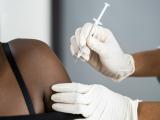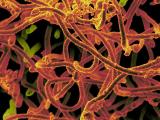Ebola levels in the blood appear to be a strong predictor of death, according to a study of nearly 700 patients in Guinea's capital city who were treated for the disease during the height of West Africa's outbreak, researchers reported yesterday.
And a survey of US hospitals designated as Ebola treatment centers (ETCs) during the outbreak found that establishing the facilities was costly, averaging about $1.2 million to get each one up and running, according to a report published yesterday.
In the outbreak region, no new cases Ebola cases were reported today, with the number of patients reported in Liberia's recent family cluster remaining at three, one of them fatal. In its weekly update, the World Health Organization (WHO) said 165 contacts of the patients have been identified so far, 34 of them high-risk ones.
Virus blood levels and fatality rate
In the blood study, a team led by scientists from Senegal and France's Pasteur Institute examined lab, clinical, and demographic data from 699 patients who were hospitalized for Ebola in Conakry between March 2014 and February 2015. Their main goal was to explore the association between viremia and case-fatality ratio (CFR).
They published their findings in the early online edition of Public Library of Science (PLoS) Medicine.
They found that Ebola virus levels in blood stayed stable the week after symptom onset, with the CFR increasing with the level of viremia. The CFR for patients with low, medium, and high viremia was 21%, 53%, and 81%, respectively, they reported.
When they broke down the patterns by age, they found that when compared with teens and younger adults ages 15 to 44, children younger than 5 years old and adults age 45 or older had higher CFR, but children ages 5 to 14 had lower CFR.
Average blood level increased tenfold in July 2014 as the outbreak intensified, which came with a 14% increase in CFR, the team reported.
Researchers cautioned that the findings might not reflect Ebola cases outside of hospital settings. They said, however, that awareness of the relationship between viremia and CFR could help clinicians more accurately gauge the effects of Ebola treatments in nonrandomized trial settings. They also noted that stratifying Ebola patients by viremia could help researchers reduce study sample sizes for randomized trials by 25%.
ETC start-ups incur substantial cost
As West Africa's Ebola outbreak intensified and the first patients were treated in the United States and hospitals struggled with the demands required by high-containment isolation and adequate personal protective equipment, federal officials released a stratified framework, designating frontline facilities, assessment hospitals, and ETCs.
According to the plan, 55 hospitals were designated by states to care for lab-confirmed Ebola patients. They included three previously established biocontainment units.
The cost of preparing the facilities was anticipated to be substantial, and a team from six different facilities, including Emory University Hospital and the University of Nebraska Medical Center, sought more detail on the costs by sending a 19-question survey to all 55 of the ETCs. They published their findings in a letter in Emerging Infectious Diseases.
Of the 47 centers that responded, 45 provided total costs for establishing their ETCs. The mean was $1,197,993. The team found that the most expensive item was facility construction and remodeling. The cost for initial staff training averaged $267,075.
The survey revealed that $54 million in unbudgeted expenses was a substantial financial burden on the ETC facilities, though it found wide variation in expenditure amount and type.
Researchers noted that the amounts don't reflect ongoing operation of the ETCs, and they pointed out the high start-up price tags underscore the need for specialized units for treating Ebola patients and that having a tiered network in place can be a valuable resource for future infectious disease outbreaks.
See also:
Dec 1 PLoS Med abstract
Dec 1 PLoS press release
Dec 1 Emerg Infect Dis letter
Dec 2 WHO weekly Ebola update


















